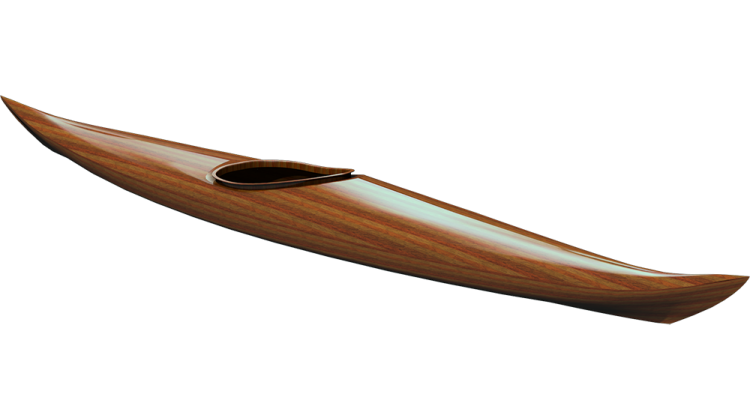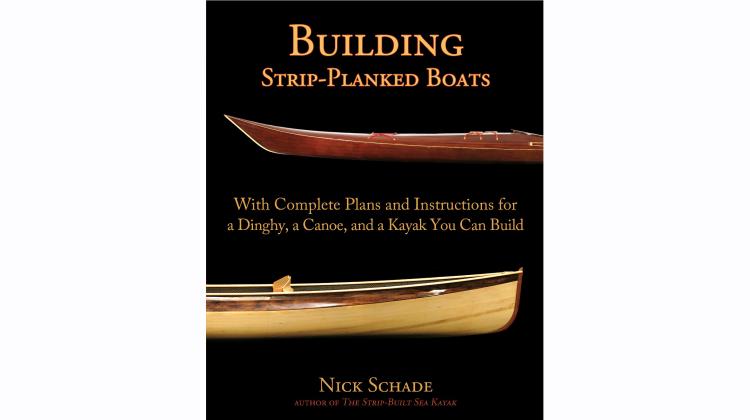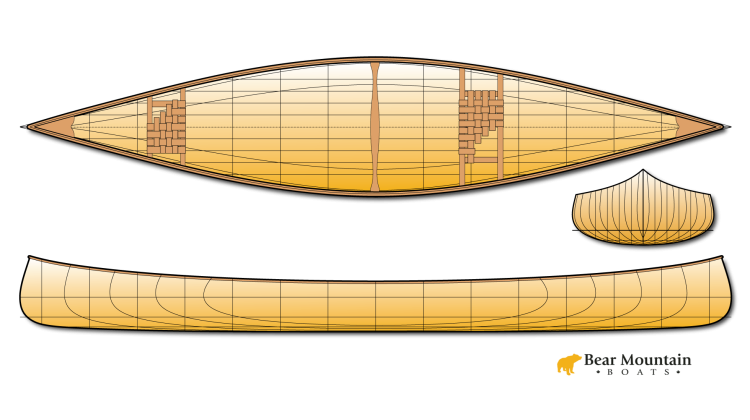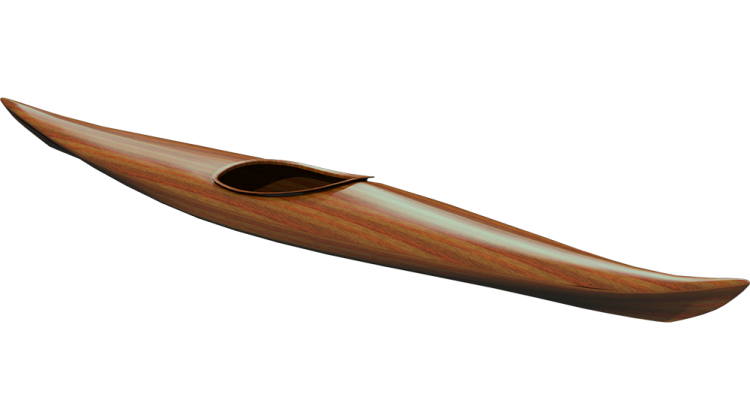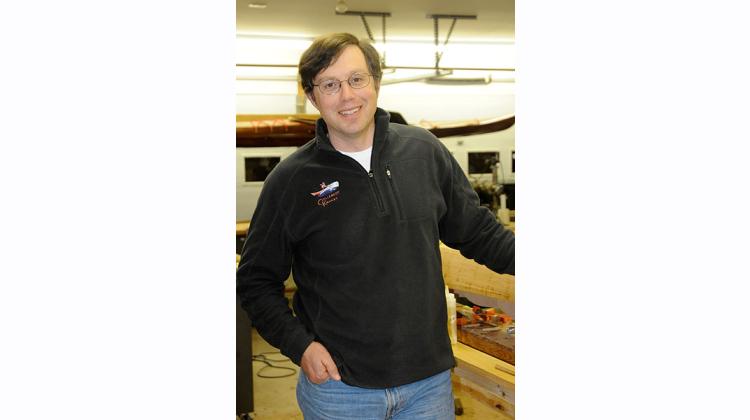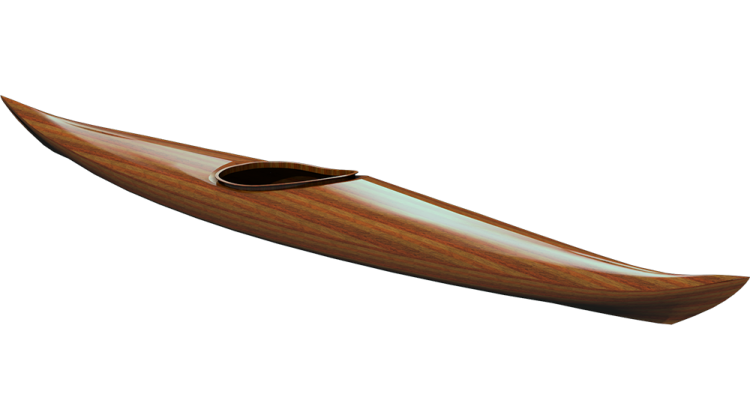In this episode I start breaking down the blanks into 3/16" thick strips. This was going fine until I lost concentration. I discuss what happened and the consequences and then finish up by ripping some wider strips for the back deck I talk about how I get vertical grain strips out of vertical grained boards.
Tools:
- Magswitch Feather Board: http://amzn.to/2Gnke1e
- Shop Fox Power Stock Feeder: http://amzn.to/2DLO5C3
- Delta Unifence: http://amzn.to/2DFSDqd
- Delta Unisaw: http://amzn.to/2GjYfbb
- Ridgid Flip Top Work Stands: http://amzn.to/2Ebns7d
- 3M Hearing Protection: http://amzn.to/2DAXmJz
[Music]
hi I'm Nick Schade at Guillemot kayaks we're
in the early stages of building the
micro bootlegger sport sea kayak this is
a strip filled kayak and we're milling
western redcedar for the strips in the
last episode I cut blanks for the strips
and planed them to thickness in this
episode we'll take those blanks rip them
down into strips for the body of the
boat and also rip some two-by-sixes down
into strips
for the back deck
here we have the wood for the body of
the boat this was the 2 by 8 that was
ripped into three-quarter inch blanks as
I said that they ended up being a little
bit thinner and over they get uniform
thickness they're just that 0.7 inches
so a little bit thinner but that's okay
that will make them make things conform
to the boat better again I've got plenty
of wood here you can see my reference
lines there just making sure
everything's still in order this is the
drop that came off the edge was not
thick enough to do a strip but I might
end up ripping that into narrow accent
strips we'll see but what's going to
happen here is we're going to start
ripping these into 3/16 strips just like
that so each blank will be kept in order
and then we'll figure out a stripping
pattern in a future episode but we're
just gonna rip these into as many strips
as we can get out of it out of each
blank bundle them up bundle them all
together and deal with them later to be
sure we get everything in order I want
to just lay these blanks out and mark
them in particular I want to make sure
that the first strip I rip off each
blank is going to be from the same side
of the board so if I rip a strip off
here I want the first strip here and
here and here and here and here and here
and here to be coming off the same side
of the board that way I'll have this
initial face of the board together if I
start if I rip one off this side one off
that side and alternate then my grain
pattern will get a little bit distorted
it's not a big deal but if I just mark
everything now so I'm going to turn
everything
the same way here then I'm all lined up
make a mark here alright so if I run
them through the table saw with this
mark up I'll be ripping the strip off
here first here here here here here here
and here
and so that first strip will always be
coming off the same side and if I keep
these marks up the whole way I know I'll
be getting the correct side of the board
every time I don't want to rip off here
then this side then that side on this
side otherwise that'll mess up the grain
pattern a little bit so in preparation
for running them through the saw now
I've got a mark I'm just going to turn
them back up this way so they're out of
the way and I'm going to and so I'm
going to cut this blank first now this
can run cleanly through the saw alright
now we're ready to cut the strip so
gloves let this set up in the saw
hearing protection turn on the power
feed turn on the dust collection
turn on the saw
[Music]
all right I just screwed up it turns out
I you know I went through all the
trouble of putting those reference lines
on it and always keep this side up well
there's a point with the blank when it's
about square and at that point I really
need to pay attention to those marks if
I don't I end up turning it 90 degrees
and end up cutting it wrong so I've now
essentially screwed up this whole board
I'll show you what the consequences are
and I have it I have more wood I'll
break out another board and start using
that but this is a hassle I you know and
just the strips from this board will be
usable for other projects but they're
just not suitable for making a fully
matched boat at this point with all the
wood matching because some of the strips
are flat grain some are vertical grain
they're not going to be in order
so it's messed up for doing a book match
both basically I've got three strips
that are wrong and they won't fit into
the pattern and thus and they're sort of
in the middle of the board so it's very
you know I'll take a look at it when I'm
you know I'll finish cutting everything
up and take a look at it and see if it's
salvageable if I can get a pattern out
of it but my expectation is that it will
just not work out so let me show you
what I did
so each blank was yielding me six strips
and I got six strips here but if you
look at these the first three here you
see vertical grain really tight grain
lines here you look at the last three
and we're flat grain and so these came
out of the board like this and then
these came out of the board something
like
yes and as a consequence you know this
matches that pretty well but as you see
the the grain here doesn't match this
these these are met these three or match
would see with each other and these
three are matched with each other but
this triad does not match with that try
it so basically this means that the
whole board is no longer suitable for
fully matching the boat while I'm at it
this is a good opportunity to talk about
why I use vertical grain versus using
flat grain boys Joe Langford had asked a
question on my previous video and I was
buying this wood why I want vertical
grain why I want flat grain so if you
see the grain structure here very tight
in here
and here you got very wide and this can
actually look pretty nice you know it
you get a more distinctive pattern just
you could be considered a little bit
boring
here you get a grain action you know you
see stuff going on it looks cool but the
problem is the summer wood in the winter
wood so the summer it's fast growing the
winter is slow growing and so the wood
here is very soft and the wood here is
very hard and so if I go to sand this
this softwood will sing much more easily
than the hardwood and so you end up with
little micro ripples in the sanded
surface when you're done it is possible
to get rid of them it takes more effort
and you know honestly I don't really
like the looks of this you know it's
more interesting but it it's just to me
it looks cruder and you know I I don't
know what it is about it I just like the
vertical grain look better and this the
flat grain strips are more work
harder to get a fairer finish planing
this the grain orientation is much more
significant than planing this and so you
just need to be a lot more careful when
you're using the flat grain strips and
when you're using the vertical grain
strips and again to my eyes I like the
looks of the vertical grain strip's
better so that's just a little
discussion about why I choose one over
the other and why I'm going through all
this effort to get vertical grain strips
so that's the story with a grain
selection and too bad I messed this one
up but I do have extra wood and I'll get
pull out another board and cut that up
but first let me just finish cutting up
this like these blanks and so I have
that set and you know obviously these
three are messing up everything up so
I'll just put this whole board away and
you know all I can use it someplace
where I'm not matching and so I can just
shuffle these strips a little bit pull
these out so I don't mix in some flack
rain with some vertical grain and you
know the the woods not going to waste
these might be stirring sticks but still
we're good
you
I'm gonna continue bundling these strips
together in their original pattern
because you never know one thing I found
what I'm doing this is get your stretch
wrap ready to go before you have your
bundle yeah it can be really hard to get
that first and off the stretch wrap at
this point and so if you're trying to
hold your bundle and get that ready to
go at the same time it's a hassle so I
always get it ready to go after I
finished with bundling up the piece at
hand alright one more blank
[Music]
I end up having to pull some of these
strips through that's usually an
indication that I just need to lubricate
the table top the table saw a little bit
more put another coat of wax on it make
things slide easier the friction of
pushing the strip's along the fence them
on the table is just more than the
traction of the stock feeder can push so
it ends up being stuck and then it tends
to get locked in a little bit need a
nice tug to get going again but with the
feather board in place there and the
power stock feeder holding it everything
down I can get away with manhandling it
a little bit more than might otherwise
at this point I'm just going to take all
these bundles of blanks so that each
individually wrapped put them back in
the same order so for another look at
the problem here here we have strips
going along each blank one matches the
next these match the next but we have
this one set where we've got the flat
grain versus vertical grain and so if we
wanted to make a panel of all these
strips sequentially this strip this set
of strips would mess up that pattern so
you know just if you're trying to do
this book matching you don't want one
out of line because that'll just your
eye will be drawn to it and it'll look
worse as an attempt to book match then
if you just randomize all these strips
if I took this whole bundle remove these
three flat
brain strips and randomize them and
basically when I randomize them I'll
take about half the strip's and flip
them in firend and that way you know
it's still the same board the general
tone of the wood is going to match well
and it's going to look beautiful but
it's not creating that matching grain
pattern that a fully matched set of
boards with a set of strips would create
for you
and as a result by getting them all
randomized you don't start to create a
pattern that draws the eye and then skip
it you know miss it somehow so you know
even as I'm picking through the strip's
I'll try not to if I happen to pick up
two that are sequential as I'm laying
them down onto the boat I might say
alright oh I'll just grab another one or
I'll shift the grain a little bit so you
know if I've got a 16 foot strip in a
length of space I'm trying to fill is 13
feet I can slide it one way or the other
and end up so the grain isn't side by
side matching and creating this pattern
that draws you attention to itself what
I have left now is the material for the
back deck of the boat and this is all
are mostly flat grain stock so my goal
with this was to rip strips off the edge
the back deck is fairly flat and so I
get a nice wide strip that fills in the
back fairly quickly and you actually get
to see more grain because we're dealing
with wider pieces of wood and so before
I reset the saw to recut the strips for
the body of the boat I was just gonna
get some strips out of here too
create that back deck so I need to reset
the height of the power stock feeder to
deal with the thicker stock and then
we'll go from there so now I have a set
of really nice very nice there's some
knot and some squirrelly grain going on
in there
and a lot of color variation through it
some streaks and browns and greens
grains going all over the place that's
fun you know down here it looks really
nice again lots of variation in color
and then a pattern that flows across the
board that really looks interesting now
I'll just take this stack so this is a
fine-looking set a bore it's also some
nice streaks in the grain here a little
bit of wiggle there just fun I mean my
sense is the previous piece is a little
bit more interesting but you know we'll
lay this out we'll get them out together
at some point and in
your video will talk about what I'm
looking for when I'm selecting grain
patterns on this and different ways to
deal with it so we've got some good
stuff to work with here so that finished
up a little bit better than it started I
got some really nice wood options for
the back deck and I'll just have to do
it do-over on the body of the boat I've
got a really nice plank selected that I
think will work out well but that'll be
the next episode redoing the strips for
the body of the boat and I will also try
and talk a little bit about my table-saw
setup and so if you're looking forward
to that please hit subscribe if you like
this video please hit like and I would
also appreciate any support I could get
through my patreon site helps pay for me
screwing up while I'm making videos I
appreciate your support and thanks for
watching happy paddling
hi I'm Nick Schade at Guillemot kayaks we're
in the early stages of building the
micro bootlegger sport sea kayak this is
a strip filled kayak and we're milling
western redcedar for the strips in the
last episode I cut blanks for the strips
and planed them to thickness in this
episode we'll take those blanks rip them
down into strips for the body of the
boat and also rip some two-by-sixes down
into strips
for the back deck
here we have the wood for the body of
the boat this was the 2 by 8 that was
ripped into three-quarter inch blanks as
I said that they ended up being a little
bit thinner and over they get uniform
thickness they're just that 0.7 inches
so a little bit thinner but that's okay
that will make them make things conform
to the boat better again I've got plenty
of wood here you can see my reference
lines there just making sure
everything's still in order this is the
drop that came off the edge was not
thick enough to do a strip but I might
end up ripping that into narrow accent
strips we'll see but what's going to
happen here is we're going to start
ripping these into 3/16 strips just like
that so each blank will be kept in order
and then we'll figure out a stripping
pattern in a future episode but we're
just gonna rip these into as many strips
as we can get out of it out of each
blank bundle them up bundle them all
together and deal with them later to be
sure we get everything in order I want
to just lay these blanks out and mark
them in particular I want to make sure
that the first strip I rip off each
blank is going to be from the same side
of the board so if I rip a strip off
here I want the first strip here and
here and here and here and here and here
and here to be coming off the same side
of the board that way I'll have this
initial face of the board together if I
start if I rip one off this side one off
that side and alternate then my grain
pattern will get a little bit distorted
it's not a big deal but if I just mark
everything now so I'm going to turn
everything
the same way here then I'm all lined up
make a mark here alright so if I run
them through the table saw with this
mark up I'll be ripping the strip off
here first here here here here here here
and here
and so that first strip will always be
coming off the same side and if I keep
these marks up the whole way I know I'll
be getting the correct side of the board
every time I don't want to rip off here
then this side then that side on this
side otherwise that'll mess up the grain
pattern a little bit so in preparation
for running them through the saw now
I've got a mark I'm just going to turn
them back up this way so they're out of
the way and I'm going to and so I'm
going to cut this blank first now this
can run cleanly through the saw alright
now we're ready to cut the strip so
gloves let this set up in the saw
hearing protection turn on the power
feed turn on the dust collection
turn on the saw
[Music]
all right I just screwed up it turns out
I you know I went through all the
trouble of putting those reference lines
on it and always keep this side up well
there's a point with the blank when it's
about square and at that point I really
need to pay attention to those marks if
I don't I end up turning it 90 degrees
and end up cutting it wrong so I've now
essentially screwed up this whole board
I'll show you what the consequences are
and I have it I have more wood I'll
break out another board and start using
that but this is a hassle I you know and
just the strips from this board will be
usable for other projects but they're
just not suitable for making a fully
matched boat at this point with all the
wood matching because some of the strips
are flat grain some are vertical grain
they're not going to be in order
so it's messed up for doing a book match
both basically I've got three strips
that are wrong and they won't fit into
the pattern and thus and they're sort of
in the middle of the board so it's very
you know I'll take a look at it when I'm
you know I'll finish cutting everything
up and take a look at it and see if it's
salvageable if I can get a pattern out
of it but my expectation is that it will
just not work out so let me show you
what I did
so each blank was yielding me six strips
and I got six strips here but if you
look at these the first three here you
see vertical grain really tight grain
lines here you look at the last three
and we're flat grain and so these came
out of the board like this and then
these came out of the board something
like
yes and as a consequence you know this
matches that pretty well but as you see
the the grain here doesn't match this
these these are met these three or match
would see with each other and these
three are matched with each other but
this triad does not match with that try
it so basically this means that the
whole board is no longer suitable for
fully matching the boat while I'm at it
this is a good opportunity to talk about
why I use vertical grain versus using
flat grain boys Joe Langford had asked a
question on my previous video and I was
buying this wood why I want vertical
grain why I want flat grain so if you
see the grain structure here very tight
in here
and here you got very wide and this can
actually look pretty nice you know it
you get a more distinctive pattern just
you could be considered a little bit
boring
here you get a grain action you know you
see stuff going on it looks cool but the
problem is the summer wood in the winter
wood so the summer it's fast growing the
winter is slow growing and so the wood
here is very soft and the wood here is
very hard and so if I go to sand this
this softwood will sing much more easily
than the hardwood and so you end up with
little micro ripples in the sanded
surface when you're done it is possible
to get rid of them it takes more effort
and you know honestly I don't really
like the looks of this you know it's
more interesting but it it's just to me
it looks cruder and you know I I don't
know what it is about it I just like the
vertical grain look better and this the
flat grain strips are more work
harder to get a fairer finish planing
this the grain orientation is much more
significant than planing this and so you
just need to be a lot more careful when
you're using the flat grain strips and
when you're using the vertical grain
strips and again to my eyes I like the
looks of the vertical grain strip's
better so that's just a little
discussion about why I choose one over
the other and why I'm going through all
this effort to get vertical grain strips
so that's the story with a grain
selection and too bad I messed this one
up but I do have extra wood and I'll get
pull out another board and cut that up
but first let me just finish cutting up
this like these blanks and so I have
that set and you know obviously these
three are messing up everything up so
I'll just put this whole board away and
you know all I can use it someplace
where I'm not matching and so I can just
shuffle these strips a little bit pull
these out so I don't mix in some flack
rain with some vertical grain and you
know the the woods not going to waste
these might be stirring sticks but still
we're good
you
I'm gonna continue bundling these strips
together in their original pattern
because you never know one thing I found
what I'm doing this is get your stretch
wrap ready to go before you have your
bundle yeah it can be really hard to get
that first and off the stretch wrap at
this point and so if you're trying to
hold your bundle and get that ready to
go at the same time it's a hassle so I
always get it ready to go after I
finished with bundling up the piece at
hand alright one more blank
[Music]
I end up having to pull some of these
strips through that's usually an
indication that I just need to lubricate
the table top the table saw a little bit
more put another coat of wax on it make
things slide easier the friction of
pushing the strip's along the fence them
on the table is just more than the
traction of the stock feeder can push so
it ends up being stuck and then it tends
to get locked in a little bit need a
nice tug to get going again but with the
feather board in place there and the
power stock feeder holding it everything
down I can get away with manhandling it
a little bit more than might otherwise
at this point I'm just going to take all
these bundles of blanks so that each
individually wrapped put them back in
the same order so for another look at
the problem here here we have strips
going along each blank one matches the
next these match the next but we have
this one set where we've got the flat
grain versus vertical grain and so if we
wanted to make a panel of all these
strips sequentially this strip this set
of strips would mess up that pattern so
you know just if you're trying to do
this book matching you don't want one
out of line because that'll just your
eye will be drawn to it and it'll look
worse as an attempt to book match then
if you just randomize all these strips
if I took this whole bundle remove these
three flat
brain strips and randomize them and
basically when I randomize them I'll
take about half the strip's and flip
them in firend and that way you know
it's still the same board the general
tone of the wood is going to match well
and it's going to look beautiful but
it's not creating that matching grain
pattern that a fully matched set of
boards with a set of strips would create
for you
and as a result by getting them all
randomized you don't start to create a
pattern that draws the eye and then skip
it you know miss it somehow so you know
even as I'm picking through the strip's
I'll try not to if I happen to pick up
two that are sequential as I'm laying
them down onto the boat I might say
alright oh I'll just grab another one or
I'll shift the grain a little bit so you
know if I've got a 16 foot strip in a
length of space I'm trying to fill is 13
feet I can slide it one way or the other
and end up so the grain isn't side by
side matching and creating this pattern
that draws you attention to itself what
I have left now is the material for the
back deck of the boat and this is all
are mostly flat grain stock so my goal
with this was to rip strips off the edge
the back deck is fairly flat and so I
get a nice wide strip that fills in the
back fairly quickly and you actually get
to see more grain because we're dealing
with wider pieces of wood and so before
I reset the saw to recut the strips for
the body of the boat I was just gonna
get some strips out of here too
create that back deck so I need to reset
the height of the power stock feeder to
deal with the thicker stock and then
we'll go from there so now I have a set
of really nice very nice there's some
knot and some squirrelly grain going on
in there
and a lot of color variation through it
some streaks and browns and greens
grains going all over the place that's
fun you know down here it looks really
nice again lots of variation in color
and then a pattern that flows across the
board that really looks interesting now
I'll just take this stack so this is a
fine-looking set a bore it's also some
nice streaks in the grain here a little
bit of wiggle there just fun I mean my
sense is the previous piece is a little
bit more interesting but you know we'll
lay this out we'll get them out together
at some point and in
your video will talk about what I'm
looking for when I'm selecting grain
patterns on this and different ways to
deal with it so we've got some good
stuff to work with here so that finished
up a little bit better than it started I
got some really nice wood options for
the back deck and I'll just have to do
it do-over on the body of the boat I've
got a really nice plank selected that I
think will work out well but that'll be
the next episode redoing the strips for
the body of the boat and I will also try
and talk a little bit about my table-saw
setup and so if you're looking forward
to that please hit subscribe if you like
this video please hit like and I would
also appreciate any support I could get
through my patreon site helps pay for me
screwing up while I'm making videos I
appreciate your support and thanks for
watching happy paddling

